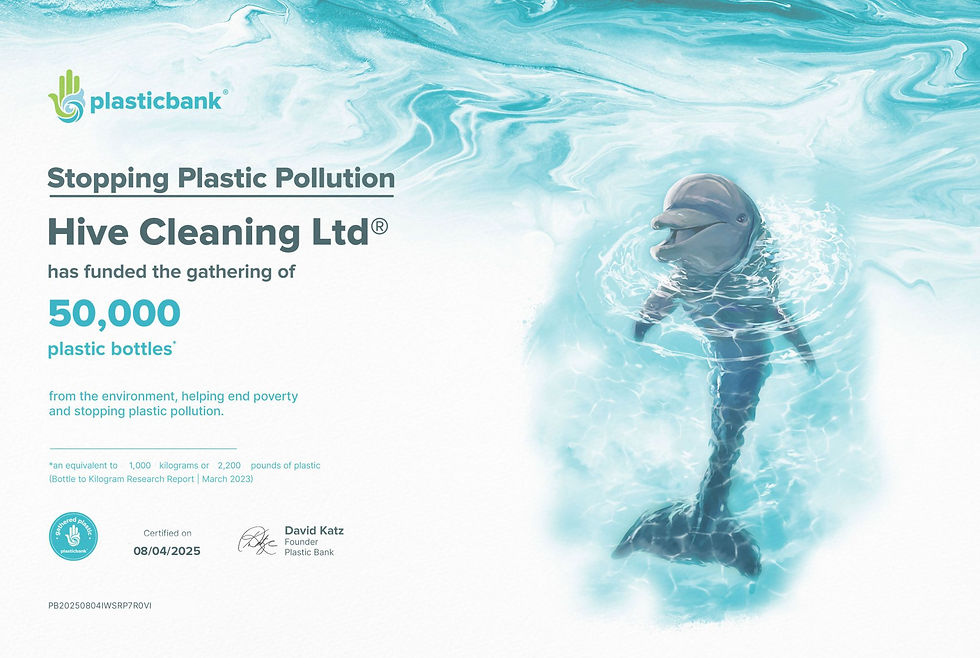All that Glitters...
- Hive Cleaning
- Dec 18, 2018
- 2 min read
It’s fun, it’s bright, it’s sparkly - and lethal for our planet. If like us, you’ve just finished your Christmas shopping and are covered in wrapping paper and decorations, stop for a moment and check how much glitter you can see around you.

It’s not widely known that glitter is made from etched aluminium bonded to polyethylene terephthalate (PET), which is also used for plastic bags and is not biodegradable. Most glitter bits we use in everyday life – from cosmetics to school art and crafts projects, are microplastics. Huge amounts of it ends up in the ocean, polluting it and becoming a severe threat to biodiversity. According to the National Geographic, ‘’ They are consumed by plankton, fish, shellfish, seabirds, and other marine life. Plastic bits collect in birds’ stomachs, where they can cause them to die of starvation.’’
While some environmental scientists have been trying to raise awareness about it for several years already, glitter is still everywhere in our lives – everyday beauty products, wrapping papers and cards, all sorts of decorations and even gravy: a London pub had a glittery gravy menu last year for Christmas. Fashion and makeup world just loves glitter, using it even for stretchmarks.

And while plastic microbeads were banned in the UK in January 2018, there is still too much plastic and glitter being used in everyday life, which enters our oceans and seas.
And while there no laws yet to impose a complete ban on glitter, be mindful of harmful microplastics and microbeads when decorating your tree and wrapping presents this year. And if you still need some sparkle in your life, there are some environmentally friendly alternatives such as the ones mentioned here.
Enough said! All of us at Hive wish you a Very Merry Christmas and a Happy New Year.










Comments